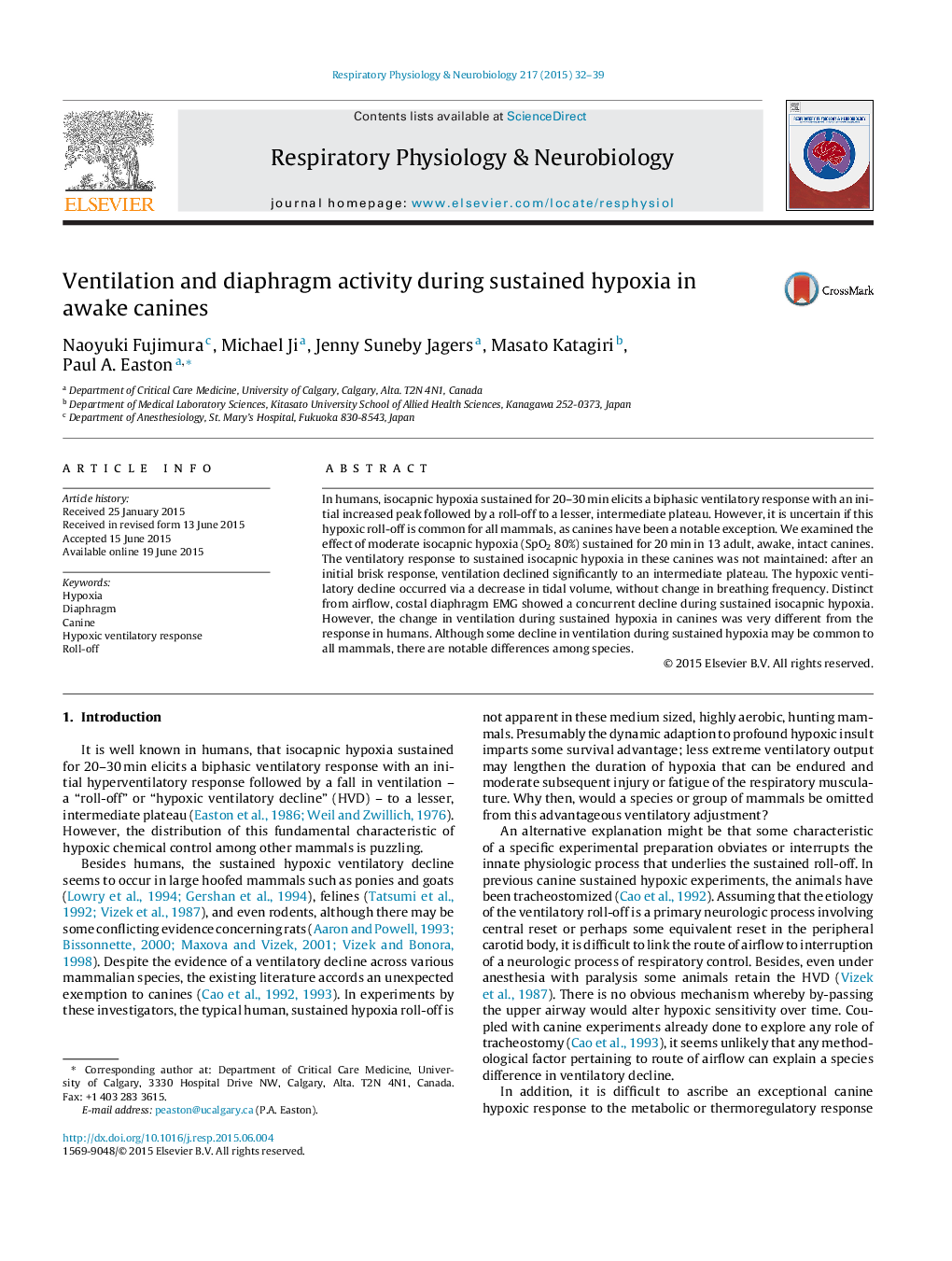| Article ID | Journal | Published Year | Pages | File Type |
|---|---|---|---|---|
| 2846812 | Respiratory Physiology & Neurobiology | 2015 | 8 Pages |
•Mammals show a biphasic ventilatory response to sustained hypoxia, although this has not been found in canines.•We examined isocapnic hypoxia (SpO2 80%) sustained for 20 min in awake canines.•Ventilation during hypoxia increased by 239%, then declined 50% to a sustained plateau.•Costal diaphragm EMG showed a concurrent decline during sustained hypoxia.•The biphasic ventilatory response to sustained hypoxia, “roll off”, in canines is similar to other large mammals, although magnitude and timing differ from humans.
In humans, isocapnic hypoxia sustained for 20–30 min elicits a biphasic ventilatory response with an initial increased peak followed by a roll-off to a lesser, intermediate plateau. However, it is uncertain if this hypoxic roll-off is common for all mammals, as canines have been a notable exception. We examined the effect of moderate isocapnic hypoxia (SpO2 80%) sustained for 20 min in 13 adult, awake, intact canines. The ventilatory response to sustained isocapnic hypoxia in these canines was not maintained: after an initial brisk response, ventilation declined significantly to an intermediate plateau. The hypoxic ventilatory decline occurred via a decrease in tidal volume, without change in breathing frequency. Distinct from airflow, costal diaphragm EMG showed a concurrent decline during sustained isocapnic hypoxia. However, the change in ventilation during sustained hypoxia in canines was very different from the response in humans. Although some decline in ventilation during sustained hypoxia may be common to all mammals, there are notable differences among species.
Graphical abstractFigure optionsDownload full-size imageDownload as PowerPoint slide
